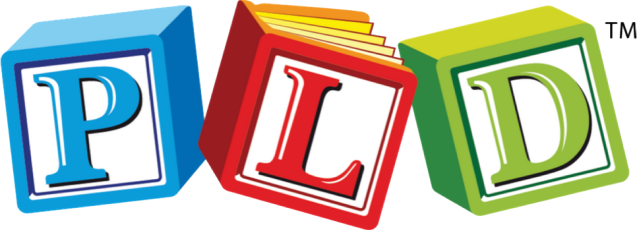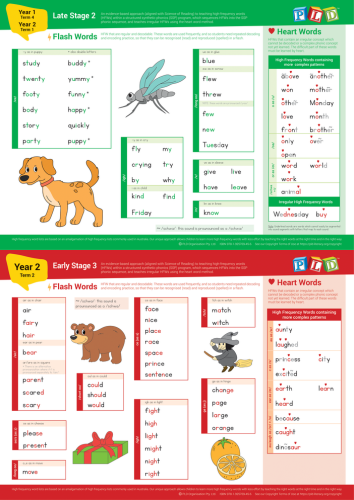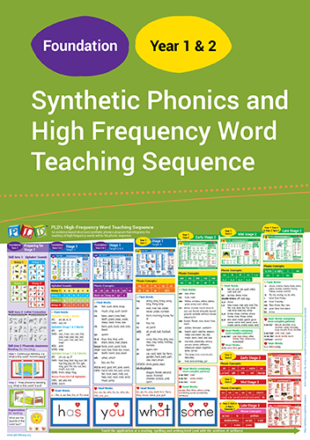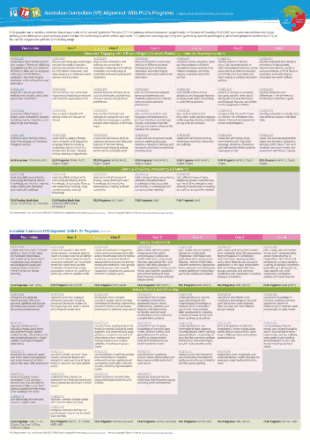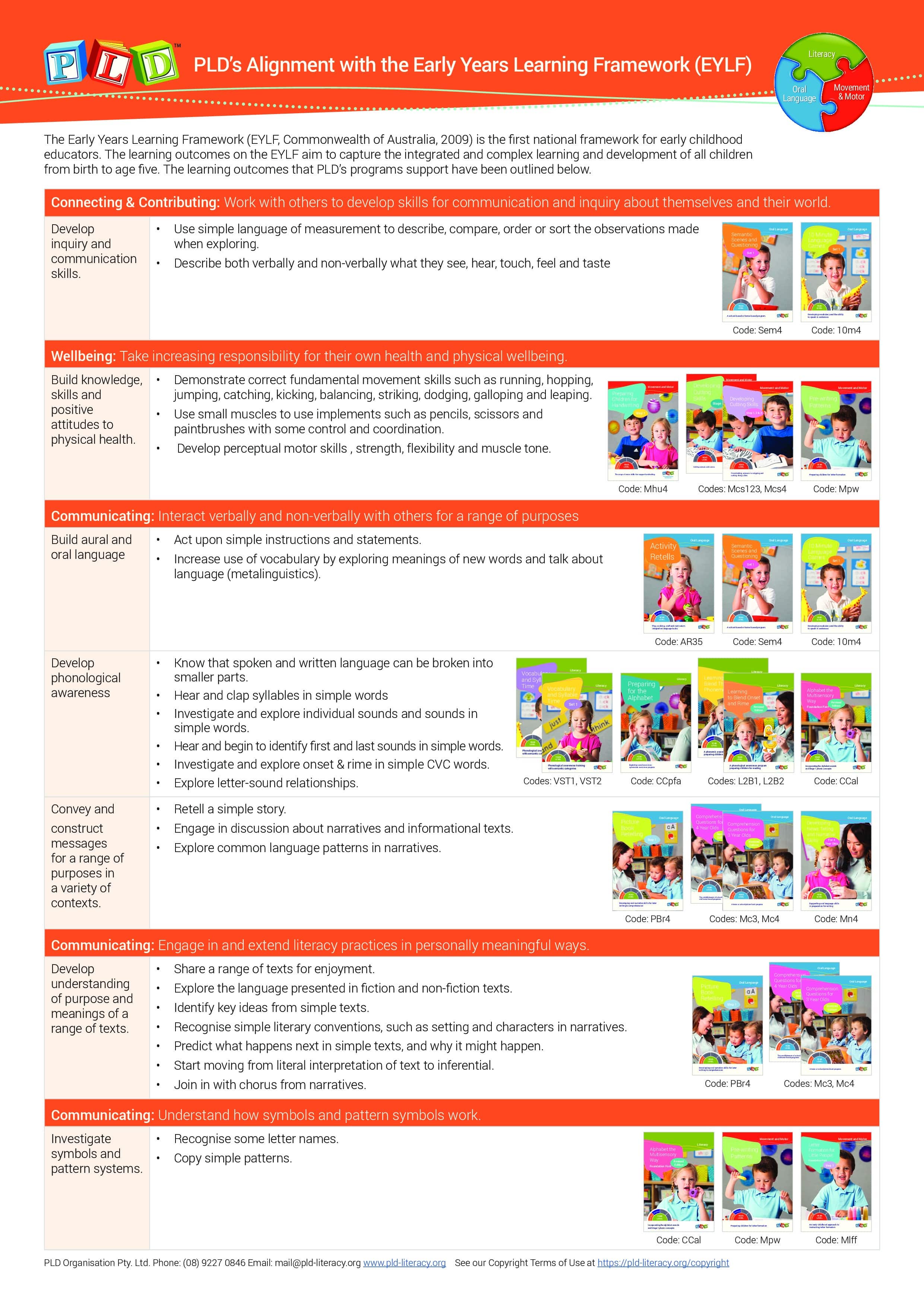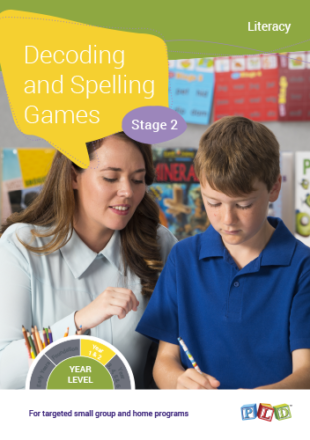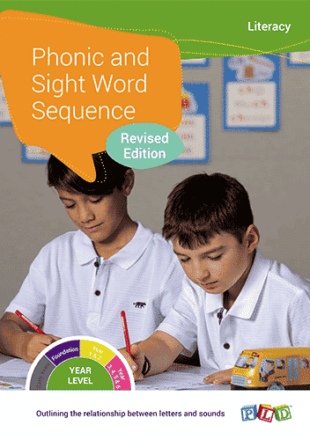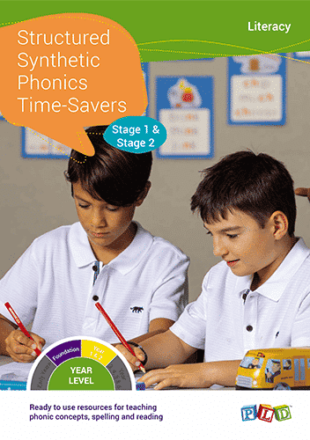-
Year 1 & 2 Screening & Tracking Manual
The Year 1 & 2 Screening & Tracking Manual outlines step-by-step instructions including what and when to screen, the materials required, time allocations and discontinue rules. We recommended that the screens are administered following a solid period of repeated targeted instruction as outlined in the PLD Year 1 & 2 Teaching Sequence Manual. In this way, […]
The Year 1 & 2 Screening & Tracking Manual outlines step-by-step instructions including what and when to screen, the materials required, time allocations and discontinue
-
Foundation to Year 3 High-Frequency Word Teaching Sequence
An evidence-based structured synthetic phonics (SSP) program that integrates the teaching of high frequency words (HFW’s) within the phonic sequence.
Following an extensive literature review recently, PLD upgraded our approach to teaching high-frequency words (HFW) by amalgamating it with our phonic progression. Our unique approach
Year 2 – Phonics & High Frequency Words
Following an extensive literature review, PLD has upgraded our approach to high frequency words (HFW). In a recent blog, a range of tips were provided to remove the confusion that surrounds sight words. Since that point, we have developed our approach further. Our 2020 approach to HFW tackles three commonly encountered issues:
- Teaching HFW in the order of frequency is important, however, the complexity and the composition of the words require a greater level of consideration for an early literacy learner.
- Applying a set of HFW to a year level (e.g. The first 100 words in Foundation, the second 100 in Year 1 etc) does not take into account the developmental level that students are operating at, and which HFW match the class’s phonic and phonemic awareness knowledge.
- The existing evidence-base consistently argues for HFW to be presented within an SSP program. Although this is repeatedly stated, it is unclear how the amalgamation of phonics and HFW should actually occur.
It is in direct response to issues such as these, that we at PLD embarked on the following process:
- Rather than focusing upon individual HFW lists, we amalgamated the words that occurred within a range of HFW lists commonly used within Australia.
- With the expanded HFW list, we organised the words not on the basis of frequency of occurrence, but in terms of their location within PLD’s SSP progression.
- The remaining irregular HFW or complex words (with sophisticated or advanced phonic concepts) were clustered according to spelling patterns and frequency of occurrence.
- All words were colour coded to illustrate the relationship between the sound and phonic structure.
For more information on the development of this resource, continue reading rethinking High Frequency Words within PLD’s Structured Synthetic Phonics program. Click on the links below to download the other High Frequency Words within SSP Charts:
Foundation Downloadable Charts
Year 1 Downloadable Charts
Year 2 Downloadable Charts
Year 3+ Downloadable Charts
Download all 7 charts in one PDF
HFW Overview Charts
Screening the Reading and Spelling of HFW’s
Review semester 1 reading and spelling irregular high frequency word knowledge through the presentation of the screen outlined in the Year 1 & 2 Screening & Tracking Manual. This check is optional and could be presented in Week 10 of Term 2.
See our Copyright Terms of Use at https://pld-literacy.org/help-pages/copyright-policy/.
Books: PLD’s books may only be used by the Authorised Purchaser, and the Authorised Purchaser’s students, and only in conjunction with classes taken by the Authorised Purchaser. PLD’s books may be photocopied up to 10% per year for use only by the Authorised Purchaser. The Authorised Purchaser is defined as the original purchaser of the PLD materials.
eBooks: PLD’s eBooks may only be used by the Authorised Purchaser, and the Authorised Purchaser’s students, and only in conjunction with classes taken by the Authorised Purchaser. The Authorised Purchaser is defined as the original purchaser of the PLD eBook. Under the ‘Statutory Educational Licence’ the authorised purchaser can:
- View the eBook as a whole or in part
- Copy the eBook to their personal drive or locally on their device
- Display the eBook on your Interactive Whiteboard, projector or smart TV, for the purpose of teaching the students in their own classroom
- Photocopy or print up to 10% of the eBook per year, for use with the students in their classroom(s).
For copyright purposes, every page of the PLD eBooks will be stamped with the name & email address provided by the purchaser at the time of order. PLD ebooks belong solely to the purchaser and may not be shared with colleagues, parents or anyone else. PLD eBooks must not be uploaded to school servers, intranets or online platforms. Schools wishing to licence PLD eBooks can contact us HERE.
School Licences: A School Licence is a multi-user subscription to a PLD resource, such as a book or program, in a digital and printable format that is accessible via the ‘My Subscription’ section of the PLD website. A School Licence is valid for 12 months from the date of purchase and can be used by an unlimited number of teachers within a school. When bought under a School Licence:
- Resources are accessible in digital, flipbook format, which teachers can access from anywhere, at any time, on any device via the PLD website.
- The resources can be used by any amount of teachers in that school.
- Multiple teachers can access the resources simultaneously.
- The resource is available to print, subject to the standard 10% per year limitation as per Australian Copyright law.
- Updated versions of resources will be automatically accessible to users with a current licence for free, ensuring all users have access to the latest versions of resources.
- Resources are stored centrally and accessed via a secure login account on the PLD website. Thus, all currently subscription resources are accessible in the one convenient place, making resources extremely easy to find. Moreso, the school licence offering eradicates the frustration of lost or misplaced resources and programs which happens often with hardback books.
Additional information can be accessed via the following links:
Books: https://support.pld-literacy.org/en-au/article/plds-printed-electronic-materials-how-can-they-be-used-can-i-share-them-with-a-friendcolleague-9lk4y/
eBooks: https://support.pld-literacy.org/en-au/article/the-pld-ebooks-how-can-they-be-used-what-is-the-copyright-policy-ptfya8/
PLD’s Copyright Policy: https://support.pld-literacy.org/en-au/article/copyright-and-terms-of-use-of-pld-literacy-15tkcer/

